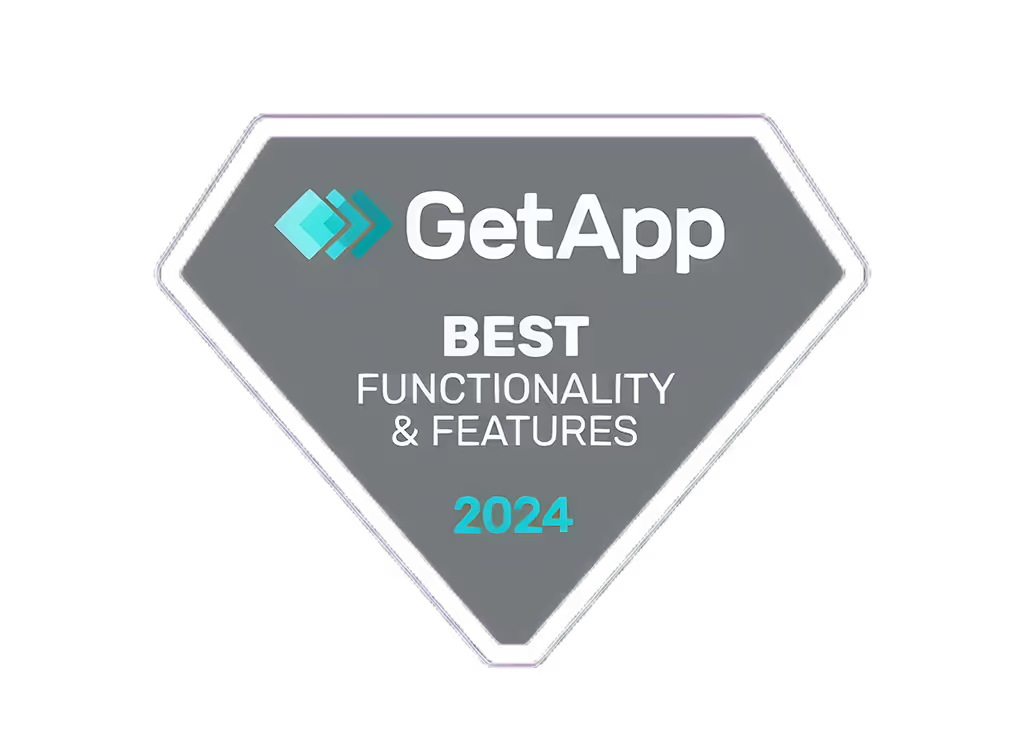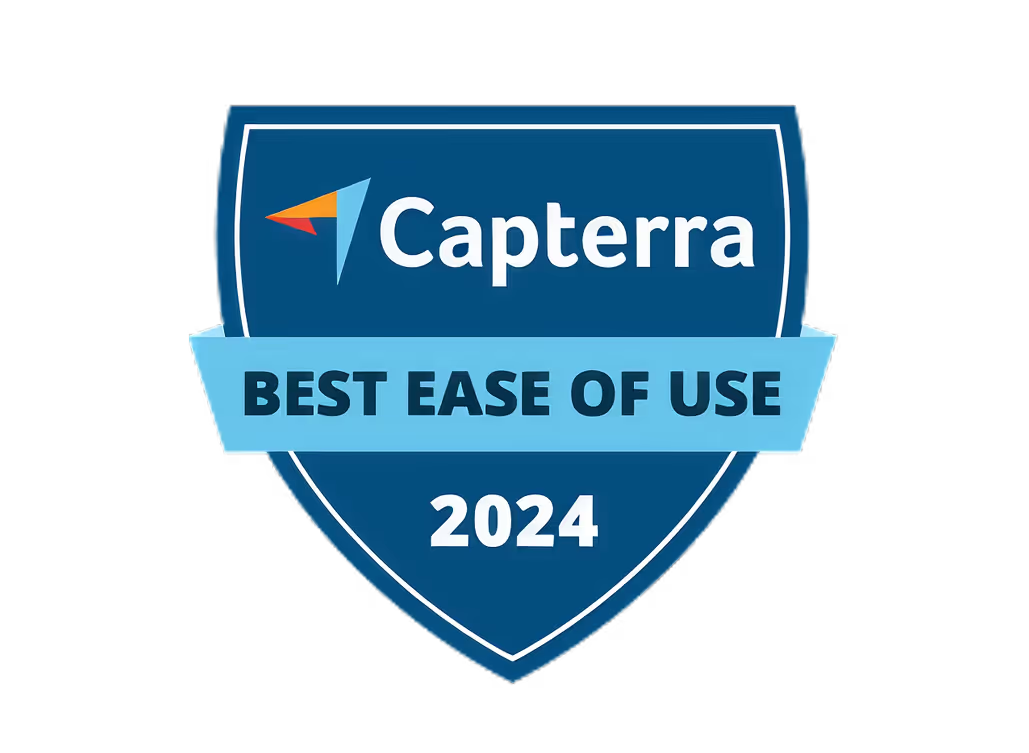Best Mobile Banner Ads: Conversion Tactics

Most marketers would agree that converting website visitors into leads is an ongoing challenge, especially on mobile.
Luckily, with some strategic tweaks to your mobile banner ads - like placement, design, and personalization - you can start driving higher conversion rates.
In this post, we'll uncover the latest tactics for creating high-performing mobile banner ads, from leveraging behavioral data to optimizing ad sizes and CTAs for small business budgets. You'll walk away with actionable tips to boost conversions across your ad campaigns.
Introduction to Best Mobile Banner Ads
Mobile banner ads present a major opportunity for small businesses to drive conversions through targeted, engaging ad experiences optimized for the mobile environment. As mobile usage continues to dominate, with over 50% of website traffic now originating from mobile devices, effective mobile banner ad strategies are essential for brands looking to connect with customers.
Exploring the Impact of Mobile Banner Ads on Conversion Rates
Well-designed mobile banners that provide a smooth user experience can lift conversion rates significantly. Key elements include:
- Prominent call-to-action buttons: Clear, contrasting CTAs that direct users to conversion goals. Positioned for easy tapping.
- Personalized messaging: Displaying relevant offers based on user data and behavior boosts response.
- Responsiveness: Ensuring ads resize and reflow for all devices. Covering major banner ad sizes.
Crafting mobile banners tailored to your audience and campaign goals can give conversion rates a sizeable boost.
The Evolution of Mobile Banner Ads: From Banner Blindness to User Engagement
The mobile banner ad landscape has shifted radically from the days of banner blindness. Modern mobile banners now:
- Integrate the experience: Banners no longer disrupt but rather enhance the user journey when relevant.
- Adapt creatives dynamically: Responsive banner ad formats and data-driven personalization.
- Utilize rich media: Animation, video, and interactivity engage rather than annoy users.
This evolution shows mobile banners can drive conversions by captivating audiences rather than alienating them. The future lies in crafting ad experiences that provide value and align with user needs.
Mobile Banner Design: Crafting Visually Compelling Ads
Effective mobile banner ad design is crucial for capturing user attention and driving conversions. By applying principles of psychology and responsiveness, we can create visually compelling ads optimized for the mobile experience.
The Psychology of Color in Mobile Banner Ads
- Colors evoke emotions that influence user response. Blue and green hues promote trust and security, while vibrant reds, oranges and yellows grab attention.
- Analyze top performers in your industry to identify color trends. Fashion brands tend towards bold, vibrant palettes, while financial services lean towards conservative blues and greens.
- Test different color variants to determine which resonates best with your audience and campaign goals. Prioritize contrast for readability.
- Personalize color schemes to match brand guidelines. Consistent branding boosts familiarity and recognition.
Incorporating Responsiveness in Mobile Ad Design
- Craft ads with flexible dimensions to adapt across various mobile screen sizes. Key ad units include 320x50, 300x50 and 320x100.
- Ensure critical elements like headlines and CTAs are legible and clickable across devices. Use minimal, bold text.
- Compress visuals to reduce file size and accelerate load times. Leverage vector graphics for sharp image quality.
Best Banner Ads 2022: Learning from Top Performers
Analyzing 2022's top mobile banner ads reveals key strategies:
- Animation grabs attention while communicating key messaging. But keep it short - 3 to 5 seconds.
- Personalization by location, weather, time of day, purchase history, etc. boosts relevancy and conversions.
- Contrasting colors ensure readability and call-to-actions stand out.
- Speak to user emotions with imagery and copy that connects.
Apply these lessons when designing your own mobile banners. Test and iterate to determine optimal strategies.
Designing for Ad Viewability: Ensuring Your Mobile Banner Ads Get Seen
To enhance viewability:
- Request above-the-fold placement to be seen immediately.
- Use attention-grabbing animations and contrasting colors.
- Get certified by viewability measurement partners like MOAT, Integral Ad Science or DoubleVerify.
Continually assess viewability rates and optimize for improvement. Top placements, compelling creative and third-party verification set your brand up for mobile banner success.
Optimizing Mobile Banner Ad Sizes for Maximum Impact
Mobile banner ads allow businesses to reach potential customers in a visually compelling way while they are on their mobile devices. However, in order to drive conversions, it's important to understand which banner ad sizes perform best across different devices.
Understanding Top-Performing Mobile Ad Sizes
Research shows that the IAB standard ad sizes tend to have higher viewability and click-through rates on mobile:
- 320x50 - One of the most popular mobile banner ad sizes, with up to 90% viewability on smartphones. The compact size places it above the fold on most screens.
- 300x250 - Mid-sized ad unit viewed as the "workhorse" of mobile. Big enough to show detailed text/images while small enough to not disrupt user experience.
- 320x480 - Taller ad size that captures attention as it takes up more screen real estate. Allows for more visuals and copy. Up to 20% higher CTR compared to 300x250.
The choice depends on campaign goals and audience device usage. Aim for sizes that align with on-page content width for seamless integration.
Customizing Banner Sizes for Niche Audiences
Custom mobile ad sizes that complement specific content types can boost engagement:
- Travel industry - 600x500 ads with panoramic images of destinations
- Recipe sites - 300x410 banners featuring food photos and meal prep times
- Gaming apps - 336x280 with character artwork and download CTAs
Match ad dimensions and messaging to context for relevance. Just ensure custom sizes display correctly across devices.
Balancing Creativity and Clarity in Different Mobile Ad Sizes
No matter the banner size, focus on:
- Clear messaging - Convey the offer or CTA prominently with minimal text
- Effective visuals - Show product/service benefits with engaging images
- Well-placed CTAs - Draw attention to calls-to-action with contrasting colors
This retains clarity while allowing for visually compelling designs. Test different creative approaches to determine optimal balance.
In the end, while standard IAB sizes perform well, custom mobile banner ads tailored to specific audiences can capture attention when blended seamlessly into the user experience. Optimization is key for conversions.
sbb-itb-606b7a1
Personalization Techniques for Mobile Banner Ads
Unveil how personalization can transform generic mobile ad banners into engaging, conversion-driving messages.
Leveraging Content Personalization for Relevance
Content personalization allows mobile banner ads to display dynamic information tailored to each user. By pulling data like location, browsing history, and purchase behavior, ads can showcase relevant products, offers, and messaging.
For example, an ecommerce store can display mobile banners promoting recently viewed items to remind users and encourage purchase conversion. Retargeting users this way significantly lifts click-through and conversion rates compared to generic ads.
Similarly, ads can highlight nearby brick-and-mortar stores or promotions based on a user's location. Personalized calls-to-action like "Visit your local store today!" connect more meaningfully.
The key is crafting banner ad content around the individual user versus a general audience. This level of relevance piques interest, builds trust, and boosts engagement.
Data-Driven Personalization Strategies for Small Businesses
Even small businesses can leverage data to personalize mobile banner ads:
- Behavioral Data: Track user actions like product views, cart additions, purchases, and on-site searches. Use this to retarget users or showcase complementary products.
- Location Data: Target nearby users with messages about local inventory, promotions, or store events.
- Customer Segment Data: Create audience segments like high-value customers. Serve them special offers through personalized banners.
With basic analytics, small businesses can build user profiles to inform banner ad content. Start small with one data point like recent purchases. Over time, layer in more signals.
Work with ad platforms supporting custom audiences and personalization. Tailor ad copy, images, CTAs around data for higher relevance. Test new segments continually.
The Role of Retargeting in Personalized Mobile Banner Campaigns
Retargeting plays an integral role in serving personalized mobile banner ads. By tracking user behavior like product views, brands can re-engage the same users with related ads across sites.
For example, a user browses hiking boots on an ecommerce store but doesn't purchase. The store can then retarget the user with banner ads for those exact boots across multiple sites. This reminds users, keeping the product top-of-mind.
With each retargeting banner ad impression, brands can further personalize:
- Display dynamic promotions like time-sensitive discounts
- Show user-specific product recommendations based on browse history
- Tailor ad copy and CTAs to user interests
As users demonstrate more intent through actions like signing up for email lists, brands can serve retargeting ads that reflect that. The more personalized and relevant the banners, the higher the conversion potential.
Effective Call-to-Action Placement in Mobile Banner Ads
Strategically placing calls-to-action (CTAs) within mobile banner ads can significantly impact conversion rates. By guiding users along a clear path to take action, properly positioned CTAs drive more clicks and lead to higher returns on ad spend.
The Art of CTA Placement for Enhanced Click-Through Rates
When designing mobile banner ads, CTA placement should follow key principles:
- Visibility - The CTA should be prominently visible without the need to scroll or tap. Positioning it above the fold catches immediate attention.
- Accessibility - There should be ample blank space around the CTA for easy tapping. Packing elements too tightly leads to misclicks.
- Contrast - Use contrasting colors between the CTA and background to make it stand out. Vibrant CTAs pop against neutral backgrounds.
With the limited real estate of banners, strategic CTA placement is vital for maximizing visibility and engagement. Top-performing positions include the top-left and bottom-right corners. Avoid placing CTAs dead center, as the surrounding content competes for attention.
A/B Testing CTA Positions for Optimized User Experience
The best way to optimize CTA placement is through A/B testing:
- Run multiple banner ad variants with the CTA in different positions
- Compare performance metrics like CTR and conversions between variants
- Analyze user behavior via click heatmaps to identify engagement patterns
This informs evidence-based design decisions for ideal CTAs. Continually testing and evolving positions based on data improves user experiences and outcomes.
Integrating CTAs with Mobile Ad Content for Seamless User Journeys
CTAs should seamlessly blend with the surrounding ad content through:
- Relevant messaging - Echo the offer or value proposition within the CTA for continuity.
- Consistent styling - Use colors, fonts, etc. from the ad creative in the CTA for cohesion.
- Strategic positioning - Place the CTA logically in relation to imagery and copy for intuitive flow.
This creates synergy between elements, guiding users on a natural path from viewing the ad to taking action. Seamless CTAs facilitate frictionless clicks.
Strategic CTA placement is crucial for mobile banner ad performance. By balancing visibility, accessibility and integration with content, brands can optimize user experiences for higher conversion rates.
Maximizing Conversions with Strategic Ad Placement Strategy
Strategically placing mobile banner ads in optimal locations within apps and websites can have a significant impact on conversion rates. By identifying high-visibility areas that attract user attention, ads can be positioned to drive more clicks and conversions.
Identifying Prime Real Estate for Mobile Banner Ads
When determining banner ad placement in mobile apps and responsive sites, consider these high-performing areas:
- Above the Fold - Place ads in the first visible area users see when loading a page without scrolling. This area has the highest viewability.
- Between Content Sections - Locate ads in natural content breaks between sections. This maintains user flow while exposing them to ads.
- Bottom Sticky Banners - Fixed to the bottom, these ads remain visible as users scroll. Sticky banners have click-through rates 2-4X higher than average placements.
- Idle Screens - Display full-screen interstitial ads during periods of inactivity in apps. But keep frequency low - no more than 30 seconds of inactivity - to avoid irritating users.
Analyze site/app analytics and heatmaps to identify your most viewed locations to inform ad placement decisions.
In-App Advertising: Integrating Mobile Banners for Higher Engagement
In-app mobile ads lead to higher user engagement over mobile web ads. Some effective strategies include:
- Personalized Ads - Use user data and behaviors to serve targeted, relevant ads that reflect their interests. Personalized ads deliver click-through rates 6X higher than generic ads.
- Cross-Promoting Content - Display banner ads for related in-app content to promote discovery and extended session lengths.
- Rewarded Ads - Offer app rewards for watching short videos or engaging with ads to increase voluntary viewership.
Position in-app ads in consistent locations and use non-intrusive formats to avoid disrupting app interactions.
Navigating the Challenges of Ad Placement in Responsive Designs
Serving well-placed ads in responsive designs displaying content across varying screen sizes/devices poses difficulties, such as:
- Banner Blindness - Users overlook banners when focused on content. Use animations, contrasting colors, and size/shape variations to grab attention.
- Viewability - Screen size impacts visibility. Place key ads within above the fold areas visible without scrolling regardless of device.
- Clutter - Too many ads overwhelm users. Limit ad density, use sticky ads in long feeds.
While tricky, responsive ads tailored to specific breakpoints and following best practices for each device/page area overcome these issues and raise engagement.
Conclusion: Synthesizing Best Practices for Mobile Banner Ads
Recap of Mobile Banner Ads Examples and Design Techniques
Mobile banner ads can drive conversions when designed effectively. Some key techniques include:
- Personalization: Tailor ad messaging and offers based on user data and behavior to boost relevancy. For example, display special deals to loyalty program members.
- Prominent CTAs: Ensure call-to-action buttons stand out with high contrast colors. Place them above the fold to increase visibility.
- Responsive sizes: Adapt banner sizes and aspect ratios for optimal viewing on all devices. Top sizes are 320x50, 300x250, 320x100.
- Animation and video: Utilize movement and video to grab attention while conveying key information quickly. But don't overdo it.
- Retargeting: Remarket to users who previously engaged to remind them and spur action.
Final Thoughts on Continuously Improving Mobile Banner Ad Performance
The most effective mobile banner ads evolve over time through ongoing optimization. Continually A/B test elements like design, ad copy, placements, audiences, and offers. Analyze performance data to determine what resonates best with your goals. Then double down on what works while eliminating poor performers. Staying nimble and adapting to changes in platforms, technologies and user behavior is key to driving continuous improvements in conversion rates.

















